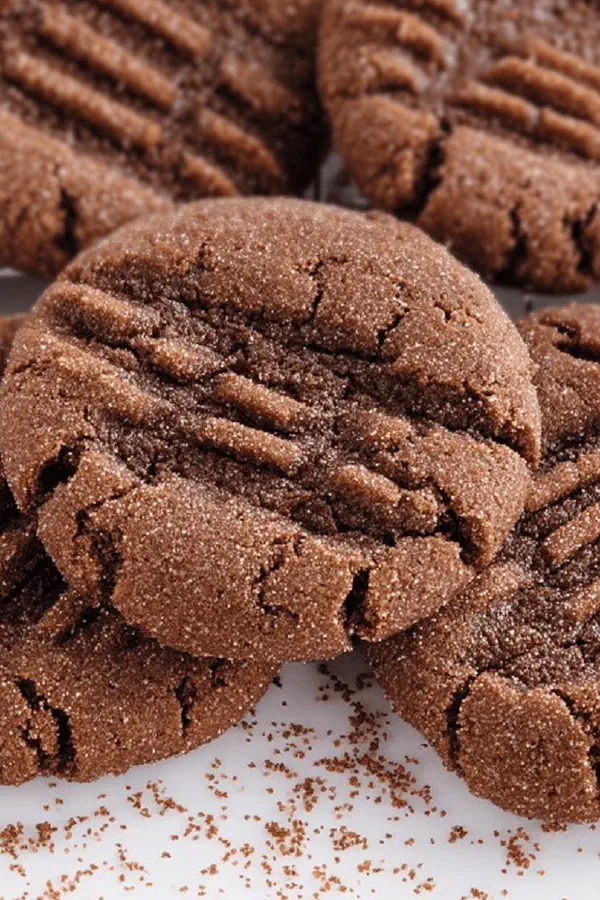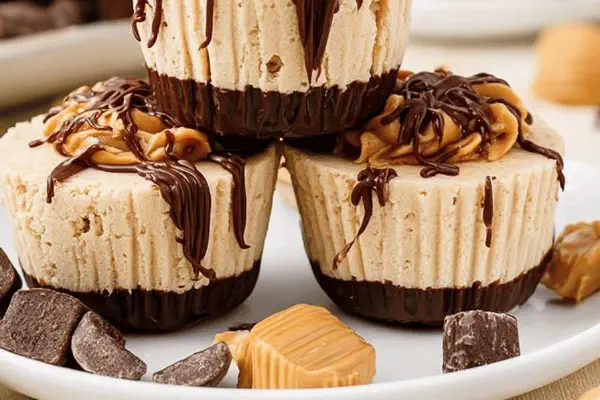Featured Recipe
Chocolate Peanut Butter Cookies

By Kate
"
A twist on classic peanut butter cookies with a rich cocoa kick. Uses white whole wheat and dark brown sugar instead of all-purpose and light brown. Rolled in crunchy turbinado sugar before baking gives crisp edges. Vanilla swapped with almond extract for a nutty depth. Dough chills longer for sturdier balls, baked slightly less for chewy centers. Perfect balance between chocolate bitterness and peanut butter richness. These cookies crack with a sugar-crisp shell. Watch fork pressure — too hard makes thick, dry cookies. Dip fork in sugar for clean lines. Dough should feel cold and firm but pliable. Use standing mixer or sturdy spatula. Parchment or silicone mat crucial to prevent sticking and burning on sugar crust. Rest cookies before moving or they’ll break. Store airtight returns that fresh chew.
"
Prep:
15 min
Cook:
15 min
Total:
Serves:
24 cookies
cookie recipes
chocolate
peanut butter
baking tips
Introduction
Dark cocoa and peanut butter duke it out in this cookie. Not in your usual way. White whole wheat brings subtle nuttiness and chew. Almond extract swaps vanilla for a more tangy-floral hit—breaks up richness so palate doesn’t blunt out. Tart edges with sugary crust. Dough chills, so it behaves. At scoop, cool fingers, not warm. Roll in sugar so forks don’t grab. Press gently; forks dipped in sugar slip right off no stick. Oven hotter than usual to crisp edges but keep center chewy. Watch cookies closely at the end; edges set, middle jiggles slightly like a good fudge brownie. Rest long on the sheet or they’ll stick and break. This one’s about balance and patience. Crunch, softness, bite, chew—all working.
Ingredients
About the ingredients
White whole wheat flour is less processed, adds fiber and nuttiness but tolerates heat differently than white flour. Swapping it for all-purpose means slightly denser cookie but richer flavor. Dark cocoa powder adds bitterness and more depth—if unavailable, espresso powder or natural cocoa works, but adjust sugar to prevent bitterness overwhelming. Dark brown sugar gives molasses notes and chew over light brown. Turbinado sugar used for rolling gives coarse crunch; if not available fine sugar or sanding sugar works but less crunchy finish. Almond extract instead of vanilla gives nuttier profile, less sweet and more aromatic. Peanut butter can be natural or processed but natural peanut butter makes dough more delicate, so chilling is crucial.
Method
Technique Tips
Start by sifting dry ingredients to avoid pockets of baking soda or powder—small hills ruin cookie texture. Cream butter and peanut butter correctly: room temp makes blending smooth, cold pats mean uneven mixing and tough bites. Adding sugar gradually encourages air pockets—light and fluffy dough traps gas, keeps cookies light. Eggs add moisture and bind; add them one by one to keep batter stable. Mixing flour should be minimal—overworking gluten stiffens dough and results in tough cookie. Refrigerate dough at least one hour; longer chilling firms dough, stops excess spreading. Use a cookie scoop for consistent size. Roll dough balls in reserved sugar (try Ziploc bag for easy coating). Dip fork in sugar before pressing shape; prevents stick and messy, uneven patterns. Baking slightly less time yields moist centers; cookies firm on cooling off hot pan; don’t rush this or cookies crumble. Store in airtight container to maintain chew—staling happens fast with sugar crust.
Chef's Notes
- 💡 Chill dough for at least an hour. It prevents excessive spreading. Firm dough means cookies hold shape better. Too warm; cookies flatten.
- 💡 Room temp butter blends easier. Cold butter leads to uneven mixing. Not fluffing up means dense texture. Take butter out early.
- 💡 Use turbinado sugar for the crust. It offers a nice crunch. Fine sugar works too, but texture changes—less crispy.
- 💡 Keep fingers cool when forming dough balls. Warm hands can melt dough. Less stickiness makes coating easier. Try rolling in sugar.
- 💡 Watch baking time closely. Edges should firm —middle still shiny but not raw. Listen for that wet sound when pressed—sign it's done.
Kitchen Wisdom
How to make these cookies less sweet?
Reduce sugar by 1/4 cup. Dark cocoa bitterness will balance it out. Don’t skip chill time.
What if I’m out of cocoa?
Espresso powder can work. Adds coffee notes; cut sugar down by 1/4 cup. A different twist on flavor.
Cookies breaking when moving?
Let them cool longer on baking sheet. Helps edges firm up. Resting ensures they lift smoothly.
How to store cookies?
Airtight container at room temp. Up to 3 days freshness. Beyond that, chew goes away. Refrigeration may change texture.



